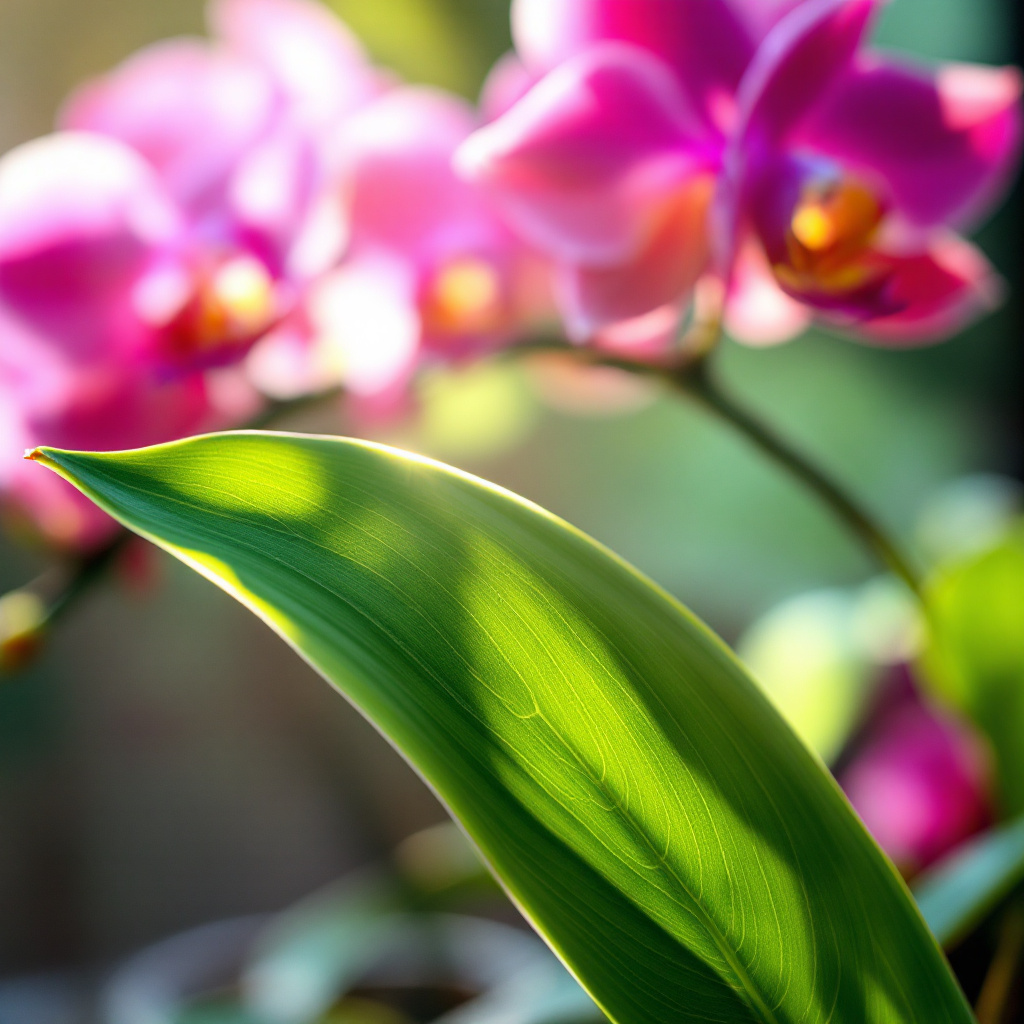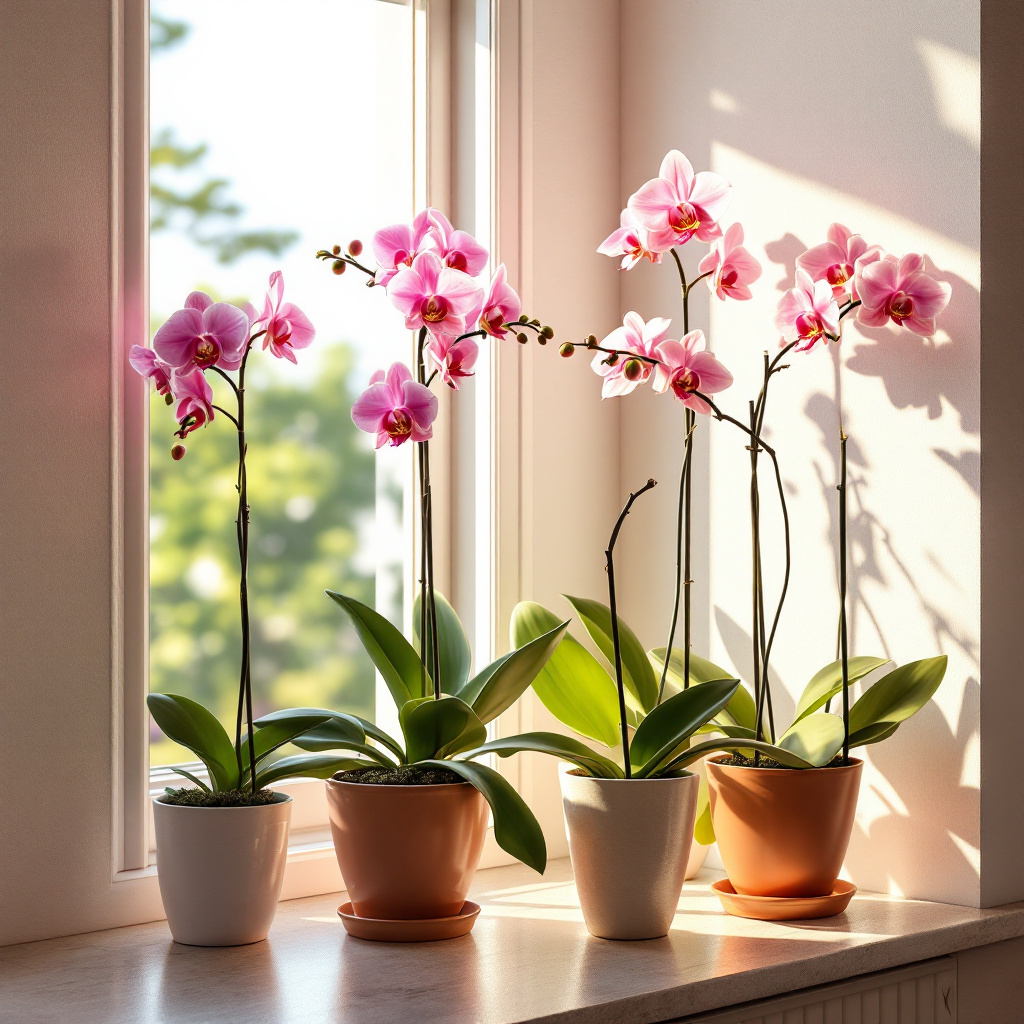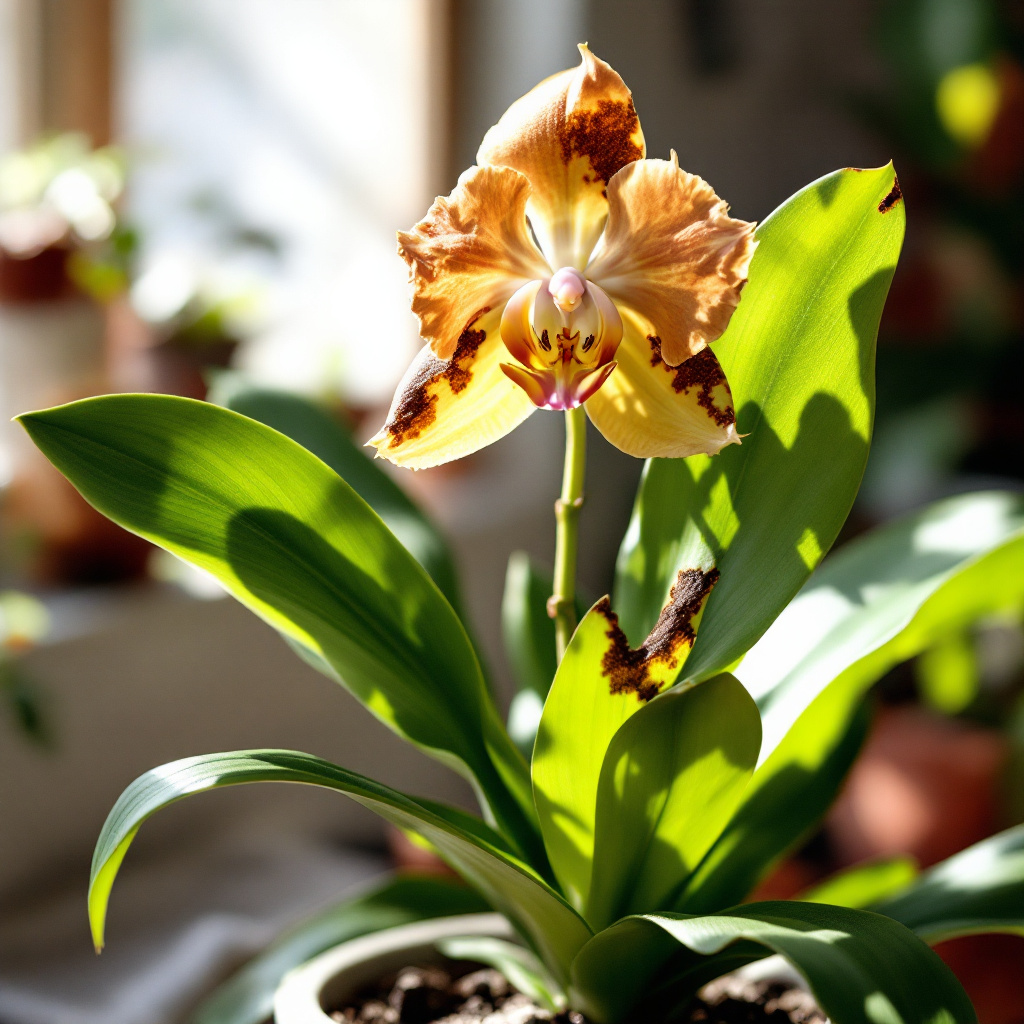
Orchid Light Requirements
When it comes to cultivating healthy orchids, understanding their light requirements is paramount. Orchids are a diverse group of plants, and different species have varying preferences for sunlight exposure. Generally, orchids thrive best in bright, indirect light. This is particularly true for the popular Phalaenopsis, which prefers slightly lower light levels compared to other types, such as Cattleyas, which can tolerate more direct sunlight. The right light conditions are crucial for photosynthesis, which in turn supports healthy growth and vibrant blooming.
For many orchid species, exposure to too much direct sunlight can result in leaf burn, while insufficient light may lead to leggy growth and reduced flowering. Therefore, understanding the specific light needs of each orchid type is essential for their care. As a rule of thumb, orchids typically require around 12 to 14 hours of light daily. Utilizing sources such as east or west-facing windows can provide the ideal conditions for most varieties. In situations where natural light is inadequate, especially during the shorter days of winter, supplemental grow lights can effectively meet the plants’ light demands.

Additionally, the placement of orchids within a room significantly influences their light exposure. For instance, placing them too close to a window, especially during the peak hours of sunlight, can expose them to excessive light, which could be detrimental. On the other hand, positioning them too far from the source of light may inhibit growth. Thus, it becomes essential to monitor the light levels regularly, adjusting their placement as necessary to ensure optimal conditions. In conclusion, understanding the light requirements tailored to specific orchid species is key to fostering healthy, resilient plants that bloom beautifully.
Ideal Window Placement for Orchids
Proper window placement is essential for the healthy growth of orchids, as different orientations can significantly affect the amount of light plants receive. When determining where to place your orchids, it is important to consider the orientation of the windows in your home: east-facing, south-facing, and west-facing windows each offer unique advantages and disadvantages for providing optimal orchid lighting.

East-facing windows are often ideal for many orchid varieties. These windows receive gentle morning sunlight, which is particularly beneficial for orchids that prefer lower light levels, such as Phalaenopsis. The indirect light available during the early hours helps prevent leaf scorching while still promoting growth. Additionally, these conditions can help maintain adequate humidity levels, which are crucial for orchids to thrive.
For orchids that require more light, south-facing windows are generally the most suitable option. These windows receive strong sunlight throughout the day and can support light-loving species such as Cattleyas and Vandas. However, it is crucial to monitor the light intensity, as prolonged exposure can lead to leaf burn. Using sheer curtains can filter the sunlight, providing a balance that allows these orchids to benefit from bright light without the risk of damage.
West-facing windows also provide strong afternoon sunlight, which can be suitable for orchids that thrive in brighter conditions. However, plants placed in these locations may experience fluctuating temperatures and a more intense light period, which can stress certain types of orchids. To ensure that the conditions remain favorable, it is advisable to rotate the plants regularly or use shading materials to mitigate the harsh afternoon sun.
Managing Light Intensity
Understanding how to manage light intensity is crucial for the health and vitality of orchids. These delicate plants thrive in conditions that simulate their native tropical environments, where they receive bright but filtered sunlight. Direct, harsh sunlight can be detrimental, leading to leaf burn and other stress-related issues. Therefore, creating indirect light conditions is essential for promoting robust growth in orchids.

One effective way to achieve the desired light intensity is to position orchids in locations that receive filtered sunlight. Placing them near south or west-facing windows can be beneficial, as these areas typically provide ample natural light. However, during peak sunlight hours, it is imperative to implement shading techniques. Simple measures such as adjusting blinds or using sheer curtains can help diffuse the intense rays of the sun, ensuring that your orchids receive the appropriate amount of light without being exposed to the full glare.

Furthermore, light-diffusing curtains serve as a practical solution for managing light intensity. These curtains allow gentle light to permeate while shielding the orchids from direct sunlight. By installing such curtains, particularly in sunny rooms, orchid enthusiasts can create a conducive environment for their plants. It is also advisable to rotate pots periodically to ensure even light exposure on all sides of the plant, preventing uneven growth.

In addition to window placement and shading, monitoring your orchids for signs of light stress is crucial. Yellowing leaves may indicate excessive light, while pale or elongated growth can signal insufficient light. By making necessary adjustments based on these indicators, you can ensure that your orchids receive the ideal light intensity they require for flourishing.
Signs Your Orchid is Getting the Right or Wrong Amount of Light
Understanding the light requirements of orchids is crucial for their growth and overall health. Recognizing the signs that indicate whether your orchid is receiving the appropriate amount of light can significantly enhance its well-being. Both insufficient and excessive light can lead to various symptoms that are easy to identify.
When an orchid receives too little light, the symptoms can include slow or stunted growth, long and leggy stems, and yellowing leaves. In severe cases, the leaves may even drop off. This lack of light forces the plant to stretch toward a light source, resulting in sparse foliage and elongated growth. Additionally, the flowers may wilt prematurely or fail to bloom at all, signaling that the orchid is not thriving in its current environment.

On the other hand, too much light can be equally detrimental. Signs of excessive light exposure include leaf scorching, where the leaves may develop brown, crispy edges or patches. The leaves might also turn a pale green or yellowish hue, indicating stress from overexposure. In extreme cases, the plants can suffer sunburn, leading to irreparable damage. When this occurs, the orchid may also produce fewer flowers or none at all, as it reallocates energy from flower production to survival.

It is essential for orchid owners to monitor their plants closely and adjust their care routines accordingly. Placing orchids in locations that provide bright, indirect sunlight is ideal. Some varieties may also require specific light conditions, making it important to research the particular needs of your orchid species. By paying attention to these signs, you can ensure that your orchids receive the right amount of light, promoting healthy growth and beautiful blooms.